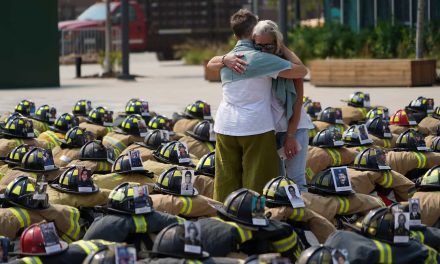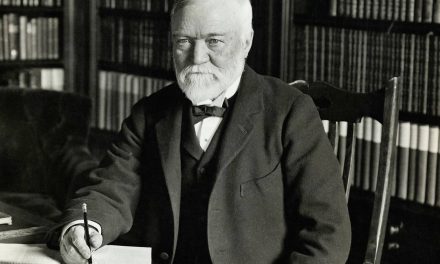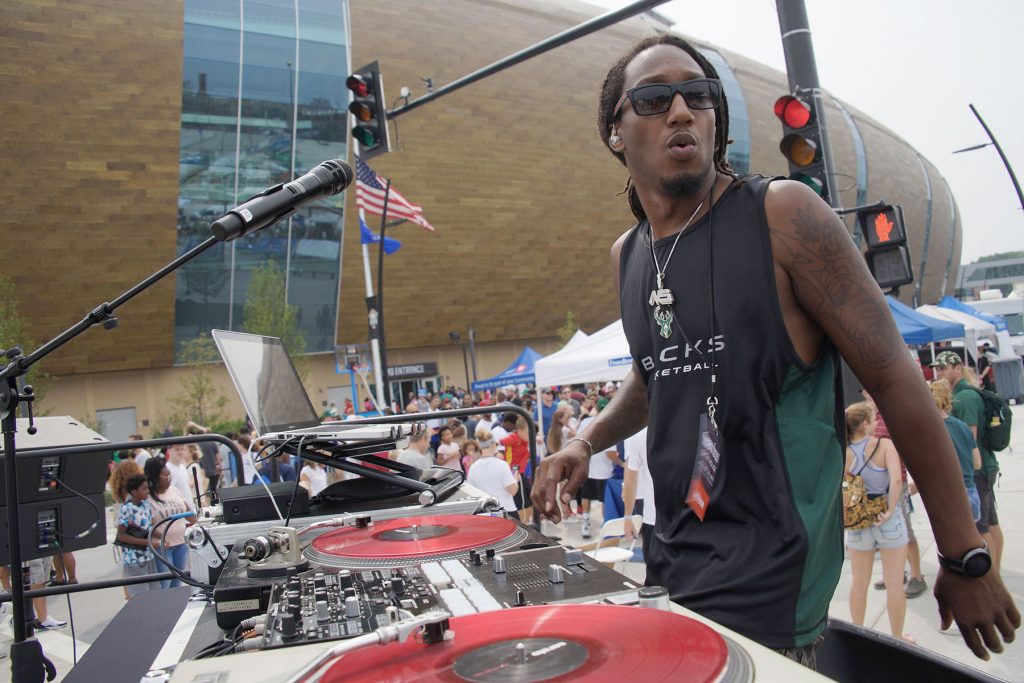
This column is part of the special series From Mississippi to Milwaukee: My Journey to 53206 by Reggie Jackson, that explores the 53206 zip code of Milwaukee in an effort to educate about the historical context and social process that drove the once thriving part of the city into its current problematic condition.
“After decades of soaring levels of homicides and drug violence, the country’s crime rate plunged dramatically over the last 25 years.” – The Atlantic, April 2016
Despite what has been said on the nightly news, levels of crime have been declining significantly nationwide since they peaked in the early 1990s. According to an exhaustive analysis by the Brennan Center completed in 2015, the reasons for the drop in crime are hard to figure out. However, from my experience growing up in the 53206 zip code in the early 1970s through the early 1980s, the growth in crime was easy to see. The drop is related to the fact that things were never as bad as it appeared in the early 1990s.
When jobs go away, crime generally follows. An underground economy replaces the economy that no longer supports the community. As Milwaukee began to lose the family supporting jobs that were so prevalent in the city, people’s bills did not all of a sudden go away. A high work force participation rate in the early 1970s shifted to significantly lower numbers of employed people in Milwaukee today. No one was affected more than black males.
As a teenager, I worked each summer to have some spare change and help my mom. Summer jobs were available and pretty easy to get. I never worked in fast food restaurants like most of my friends. During our high school years, many of them worked after school at places like KFC and other fast food joints. I was involved in a lot of after-school activities and did not work accept during the summers.
I saw the fathers of all of my friends, and most of their mothers, going to work regularly. They had what appeared to be pretty good jobs. Some worked in industrial facilities, some worked for the city and county, some worked in health care. They made a good wage and were able to take care of their families and the neighborhood was well maintained.
I do not recall seeing criminal activity as a child growing up in Milwaukee until the latter years, when I was in high school during the early 1980s. Most of that activity was related to the gangs that came up from Chicago. I knew some people who joined them. For the most part, however, they would do stuff that was not all that serious. I knew people who had their bicycles stolen. The 2-7 gang jumped me behind the Fondy Mall in 1984, while I was home on leave from the Navy. I suffered a beating but it was mostly a group of really young people who could not hurt me much. I was completely unaware of the gangs even being in existence to that extent.
They were a gang that was named after 27th Street. Many other groups started gangs named after their streets as well but were really not gangs in the sense of trouble makers. They were just a bunch of young people with nothing better to do with their time and wanted to stick together. I left Milwaukee for the Navy right after high school and missed the growth of real gangs in Milwaukee. I know from stories I heard that the gangs became really serious in the mid 1980s through the early 1990s.
It was in the early to mid 1980s that job programs for young people had been cut under the Reagan administration. Those jobs – that had been so easy to get – became increasingly difficult to acquire. Not only were young people struggling to find work but the recession of 1980 and the larger one in 1981-1982 made the job market tough for adults as well. The impact on blacks in Milwaukee cannot be understated.
By the end of 1980 the black unemployment rate was 13.9%, significantly higher than the 8.3% in 1970. Poverty began to spread. In 1970, 17,319 blacks lived in high poverty census tracts. By 1980 that number had nearly doubled to 31,982.
During the 1981-82 recession, which had been the worse since the Great Depression, goods producers made up 30 percent of the total employment in the country, but accounted for 90 percent of the 1982 job losses. Of those goods producing jobs lost, three-fourths of those were in manufacturing. The national unemployment rate in manufacturing in 1982 was an astronomical 22 percent. The number of people unemployed in December 1982 was over 12 million. For those working in the automobile industry the jobs losses were massive. The unemployment rate in the auto industry was 3.8 percent in early 1978, but reached 24 percent by December 1982.
Another impact on blacks was in the government employment sector. Many blacks had found those jobs in city, county and federal position to be safe. They were not. Government jobs nationwide decreased by 175,000 in 1982. In the fourth quarter of 1982, 7.3 million people lost their jobs.
For those black teenagers like myself in 1982, the unemployment rate hovered around 50 percent the entire year. It should not come a surprise that those conditions led to more crime nationwide. In Milwaukee, violent crime accelerated in the years that drug territory was being fought over – from the mid 1980s through the early 1990s. Several guys I grew up with in middle school and high school became involved. My closest friends stayed away for the most part from being involved in selling drugs. Unfortunately many other guys in the neighborhood were caught up. Some guys that I knew lost their lives due to the violent nature of the drug business. Many others have been incarcerated multiple times.
From 1985 to 1993 the young black male homicide rate nationwide tripled, much of it directly related to the crack cocaine business. The black community did not have access to the vehicles like boats and planes that brought those drugs into our communities from Central America and Mexico. The big money people behind the drug trade rarely faced prison. However, the low level players in the business in central cities like Milwaukee saw their prison terms being constantly extended as the nation became “tough on crime.”
These policies were supported here in our community because people wanted safer streets. At the time it made some sense. No one would be able to see the long-term consequences until it was too late.
When a critical loss of jobs happens, people need to find a way to provide for themselves. The disinvestment in Milwaukee’s central city neighborhoods, which began in the 1970s, had left a huge impact. The original tough on crime policies help explain why Wisconsin still has the highest incarceration rate for black males in the country. Our laws became more punitive in the 1980s and 1990s.
As the economy was recovering during the 1990s, Wisconsin was sending an increasingly larger number of black males to prison. As the crime rates were dropping nationwide, incarceration rates continued to grow like weeds.
Property crimes are generally associated with poverty and unemployment or underemployment. A poor economy leads to desperation. The drop in crime nationwide since the peak in 1991 has been caused by many factors. Most people credited the growth of incarceration for the drop in crime. The Brennan Center study suggests that it played a much smaller role than what most believe.
“The authors conclude that incarceration had relatively little to do with the crime decline. They find that the dramatic increases in incarceration have had a limited, diminishing effect on crime. At today’s high incarceration rates, continuing to incarcerate more people has almost no effect on reducing crime.”
The social harms done by incarceration are causing a lot of the destructive impact within communities such as the 53206 zip code. We spend an inordinate amount of money on incarcerating 2.2 million Americans instead of improving our schools and creating family supporting jobs – all to our own peril. Children with incarcerated Dads and struggling Moms have become the norm in many neighborhoods.
Milwaukee will continue to suffer as a city as long as we do not address the direct causes for many of the problems within the community. More and higher paying jobs are a key to a better Milwaukee. Census bureau records show that even those low paying jobs are disappearing in significant numbers across Milwaukee.
The number of low wage jobs paying $1,250 or less per month in Milwaukee dropped from 86,617 in 2002 down to just 77,566 in 2015, after bottoming out at 69,483 during the latter stages of the Great Recession in 2010. Those jobs are now 25.8 percent of Milwaukee jobs versus 28.9 percent in 2002.
Jobs paying between $1,251 and $3,332 per month have also decreased. There were 122,097 of those jobs in 2002 but only 95,582 in 2015. These mid-level paying jobs were 40.8 percent of Milwaukee’s jobs in 2002 and accounted for just 31.8 percent of jobs in 2015. Jobs paying $3,333 per month have been growing steadily in the city. From just 90,621 of those jobs in 2002, by 2015 there were 127,788 of them. They make up 42.5 percent of the jobs in the city by 2015, after being just 30.3 percent in 2002.
However, these jobs are not being created in the central city. I want the young people in Milwaukee to see a community that was like what I grew up in. Seeing a healthy economy and people going to jobs that pay good wages provides a significant incentive to young people in the city. They clearly do not see that enough today. Over 51 percent of black children, over 40 percent of Hispanic children, and over 35 percent of Asian children in Milwaukee are living in poverty – according to 2012-2016 data from the Census Bureau.
We need an infusion of hope for these young people before it is too late. Despite all of these terrible statistics, most people in 53206 are decent hard working people. The older generation who purchased homes back in the 1960s and 1970s are still there, but are being pushed out by higher property taxes – leading to a huge foreclosure crisis. Young people who have completed school are there in 53206 trying to make a way for themselves. Children are there playing with their friends just as I did as a little boy.
The neighborhoods within 53206 have deteriorated, but the majority of people there are like those I grew up with. A larger number of people who struggle to find good jobs is what has changed the community. The character of the neighborhoods is different because people do not have the comfort of family supporting wages.
How many of you reading this article could survive on a $7.25 per hour minimum wage? How many of you could survive at this wage working less than 40 hours per week? How many of your children could subsist at this level? How many of you would feel okay with people who are doing better, pointing the finger of blame at the conditions on you, instead of the system that has created these conditions? My guess is, not many.
- My journey from integrated schools in Mississippi to segregated schools in Milwaukee
- The impact of deindustrialization on Milwaukee’s Inner City
- When the jobs went away crime followed
- The growth of mass incarceration in Milwaukee
- Remembering a time when 53206 was known as a loving community to grow up in















